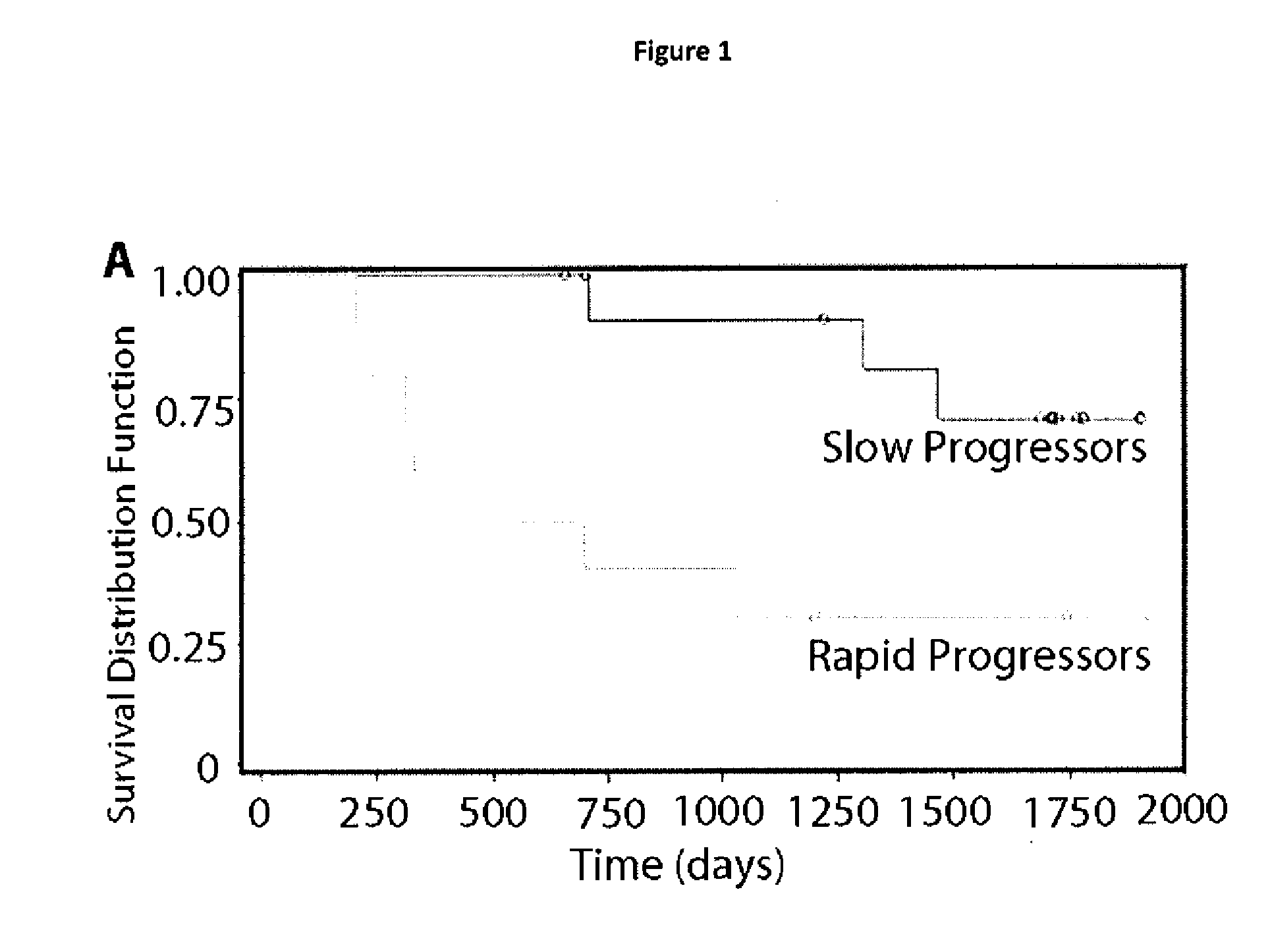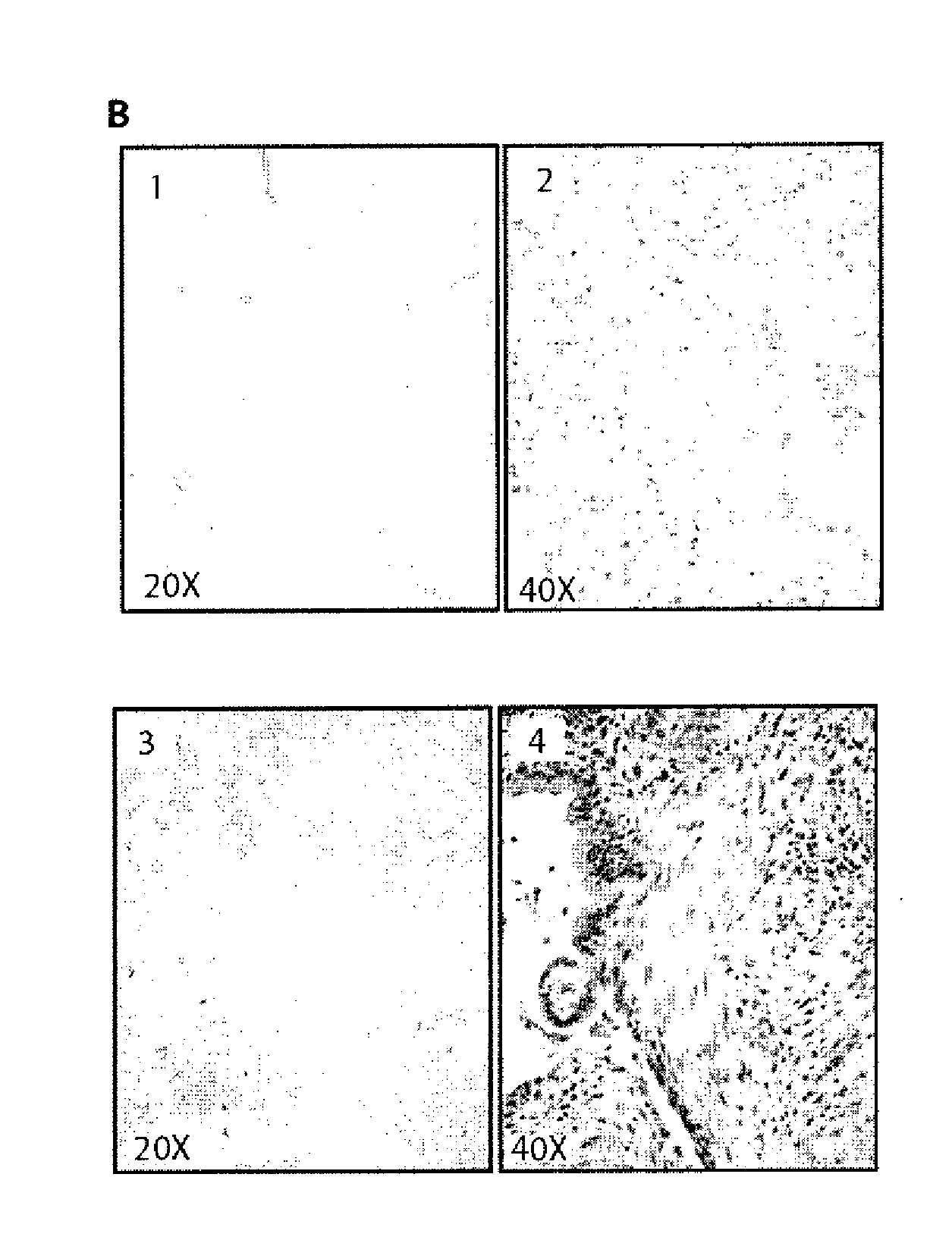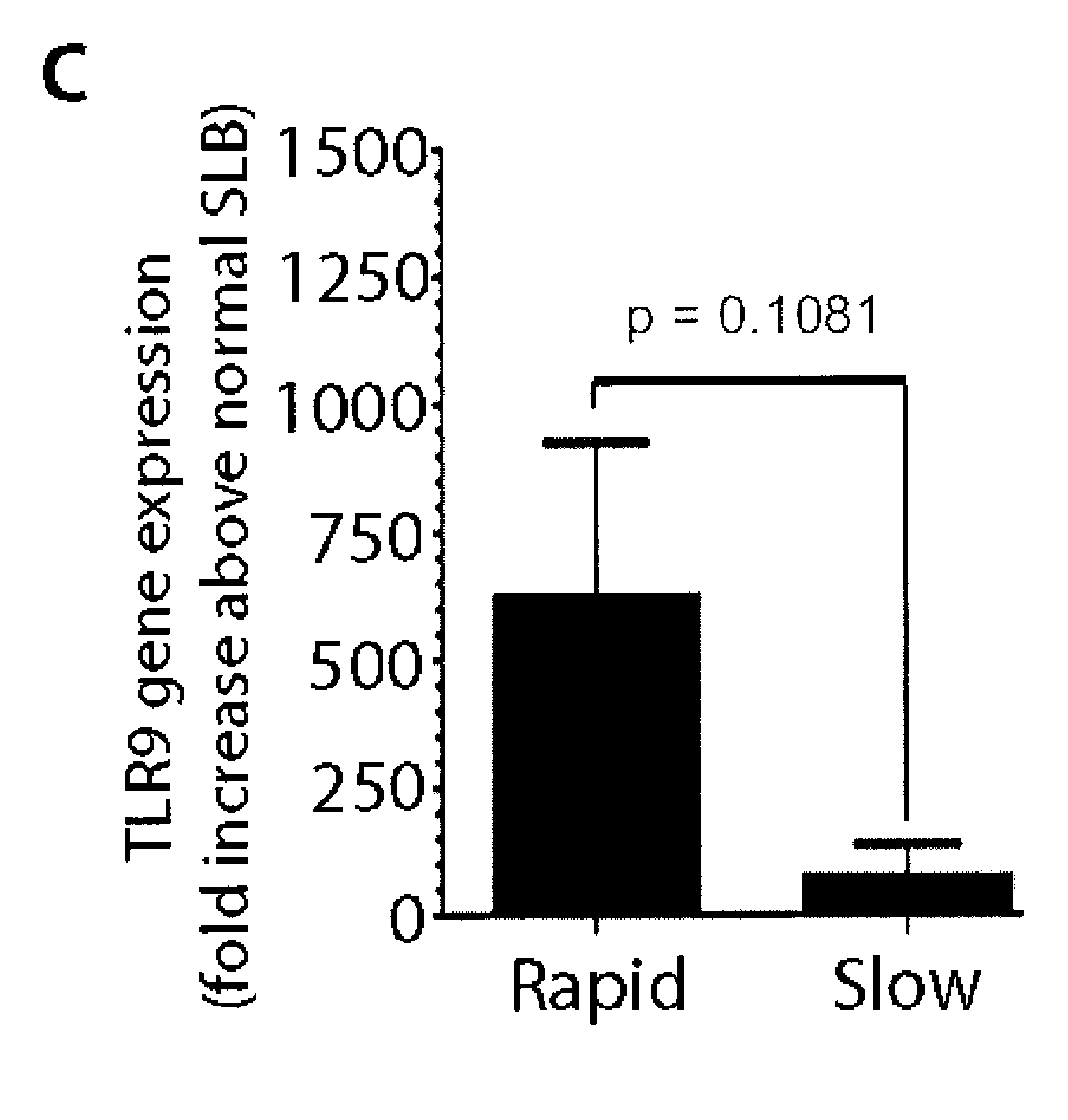Biomarkers predictive of progression of fibrosis
a technology of fibrosis and biomarkers, applied in the direction of respiratory disorders, peptides, drug compositions, etc., can solve the problems of deformation of normal interstitial structure, and achieve the effects of slowing down the progression of fibrosis, and reducing the expression level of tlr9
- Summary
- Abstract
- Description
- Claims
- Application Information
AI Technical Summary
Benefits of technology
Problems solved by technology
Method used
Image
Examples
example 1
Clinical Features of Rapid Versus Slowly Progressive Forms of IPF and Identification of Differential TLR9 Expression in Surgical Lung Biopsies
[0217]Ten IPF patients exhibited disease progression during the initial one year of follow-up while 13 did not; mean time of follow-up for the patients was 1154±03 days. Of the ten patients experiencing progressive disease during the first year of follow-up, eight were characterized as progressors based on physiological progression (FVC in 6, DLCO in 2), one experienced an acute exacerbation of IPF, and one died of respiratory causes over a time frame longer than used to define an acute exacerbation. Overall survival was better in patients who did not compared to those that did exhibit disease progression over the first year of follow-up (p=0.03) (FIG. 1A). Table 1 enumerates the clinical, physiological, imaging, and histological features at baseline.
TABLE 1Clinical features of patients with rapid versus slowly progressive IPF.Rapid Progressor...
example 2
CpG-ODN Induces a Fibroblast-Like Phenotype in Primary Human Blood Monocytes In Vitro in the Presence of TGFβ
[0220]Based on previous findings that CpG induces myofibroblast differentiation of IPF fibroblasts, it was determined whether CpG can also drive a fibroblast-like phenotype in other cell types relevant to the pathogenesis of IPF. The effects of CpG effects on the human blood monocytes, which are central facilitators of immunological responses to invading pathogens was tested. Separate studies have previously reported that fibroblast-like cells (“fibrocytes”) can arise from purified human CD14+ monocytes under serum-free conditions within 4 days (Pilling, D., et al. (2003) J Immunol 171:5537-5546; Shao, D.D., et al. (2008) J Leukoc Biol 83:1323-1333; Hong, K. M., et al. (2007) J Biol Chem 282:22910-22920). This in contrast to other reports demonstrating a fibrocyte population devoid of CD 14 in human PBMC cultures after 7 days in the presence of serum (Hong, K. M., et al. (200...
example 3
CpG-ODN Induces Epithelial-Mesenchymal Transition in A549 Cells
[0228]Based on the CpG effects observed in monocytes (FIG. 2), it was postulated that CpG may induce a classic EMT response in epithelial cells. The human adenocarcinoma type II alveolar epithelial cell line, A549, has been widely used to investigate TGFβ-driven EMT (Rho, J. K., et al. (2009). Lung Cancer 63:21 9-226; Illman, S. A., et al. (2006) J Cell Sci 119, 3856-3865; Kasai, H., et al. (2005) Respir Res 6:56). Treatment of A549 with TGFβ results in cell spreading and elongation, loss of epithelial cell markers such as E-cadherin, and expression of mesenchymal proteins including αSMA, collagen 1, and Vimentin. Untreated A549 cells after 96 hours in culture media maintained a cobblestone epithelial morphology and growth pattern (FIG. 3A panel 1). As a positive control, A549 cells were treated with increasing concentrations of TGFβ and observed obvious morphological changes with as little as 0.1 ng / mL. FIG. 3A panel b ...
PUM
| Property | Measurement | Unit |
|---|---|---|
| concentrations | aaaaa | aaaaa |
| concentrations | aaaaa | aaaaa |
| concentrations | aaaaa | aaaaa |
Abstract
Description
Claims
Application Information
 Login to View More
Login to View More - R&D
- Intellectual Property
- Life Sciences
- Materials
- Tech Scout
- Unparalleled Data Quality
- Higher Quality Content
- 60% Fewer Hallucinations
Browse by: Latest US Patents, China's latest patents, Technical Efficacy Thesaurus, Application Domain, Technology Topic, Popular Technical Reports.
© 2025 PatSnap. All rights reserved.Legal|Privacy policy|Modern Slavery Act Transparency Statement|Sitemap|About US| Contact US: help@patsnap.com



